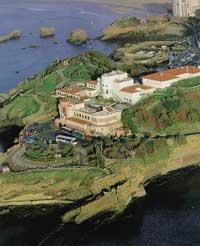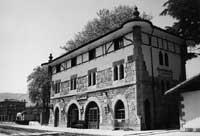Children's Museum of Azpeitia
1997/04/01 Urkizu, Urtzi Iturria: Elhuyar aldizkaria
A few years ago there were few museums of this type. In the last decade, however, museums and exhibitions dedicated to children in our environment have proliferated. In the mid-1980s, several interested people visited the children's museums in Marseille, Boston and Venezuela.
In 1986 an agreement was established between the Department of Urbanism, Housing and Environment of the Basque Government and the City of Azpeitia. The fruit of the work is the museum inaugurated on June 5, 1987, a pioneer in the Basque Country.
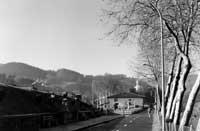
As a result of innovation, at first a large number of students were passed by Azpeitia (about 25 thousand a year). However, in recent years the figure has declined (between 15 and 16 thousand), especially as similar exposures have occurred. In total, 197,757 visitors have visited this attractive museum located in Azpeitia.
Through games it is sought that children know science and the environment, have some sensitivity. Once students have seen each room, they can perform exercises through the tiles. They have enough material to work in each area. But some explanations have become obsolete in ten years. Ana Arruti, a local worker, talks about the museum's new route. The Museum is in recovery phase, with some obsolete things. We have made small changes in the Water and Air area and we want to do the same in the Floor Room. We are working in each area from the environmental point of view and we want to go that way little by little.” Together with Ana Arruti, Edurne Agirre and Itziar Unanue work in the museum of Azpeitia. We have been told that it is difficult to attract people, but they hope that more people will come from the news.
Satisfied children in all areas
There were only four or five areas at the time of the museum's creation. Over time, however, new fields have been built that will serve to enjoy children and young people between 7 and 16 years old. The aim of the museum is to bring children closer to science and the environment through games. Also noteworthy is the video-projections series, which offer visitors a film or slides related to the area they have analyzed.
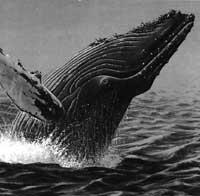
We begin with the space area, where the visitor leaves the everyday environment and immerses himself in a new environment in which the student will know the galaxies, the Solar System and the atmosphere of the Earth.
We will know the importance of the mixture of gases in our planet in air. We are also aware of the damage caused by its deterioration, mainly due to the new environmental changes that have occurred in the exhibition.
Leaving towards the center of the Earth, in the next section we will be able to know the changes that occur in it. You can also visit the Massif of Azpeitia Izarraitz.
As for waste, we will be aware of the amount and composition of waste we generate daily. It also shows how recycling, incineration and other techniques are carried out.
In the area of newly renovated water, several questions arise: How much water is there on our planet? Where? How does drinking water become? How is it contaminated? How to clean it? This room is now focused from the environmental point of view, in which we will learn something more about this resource so important for life.
The next is the field of human evolution. From the oldest ancestors to the present day, you can know their customs, inventions and ways of life.
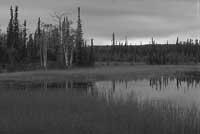
In the field of geology, we will embark on an exciting journey since 4.6 billion years ago the Earth acquired its current appearance to this day. The geological evolution of the Basque Country is also analyzed.
In Ecology we will try to understand the interactions between ecosystems, population, acquisitions and energy flows, trophic chains and organisms.
The cetacean sector is very attractive for children. In addition to bringing the unknown world of cetaceans closer to the youngest, there is an exhibition on endangered species.
We consume more and more, often without measures. The number of consumer rooms required for the products we consume is indicated.
In Euskal Herria there are other museums of this type, such as Beizama, Zatarrain, Pagoeta, Ulía and Zarautz.
It is necessary to set day and time for children's groups, after communication of the responsible teachers with the writings of the Museum. SCHEDULE Visits for children's groups on working days: Saturdays and Sundays open to the general public: Holidays closed. |

Gai honi buruzko eduki gehiago
Elhuyarrek garatutako teknologia



